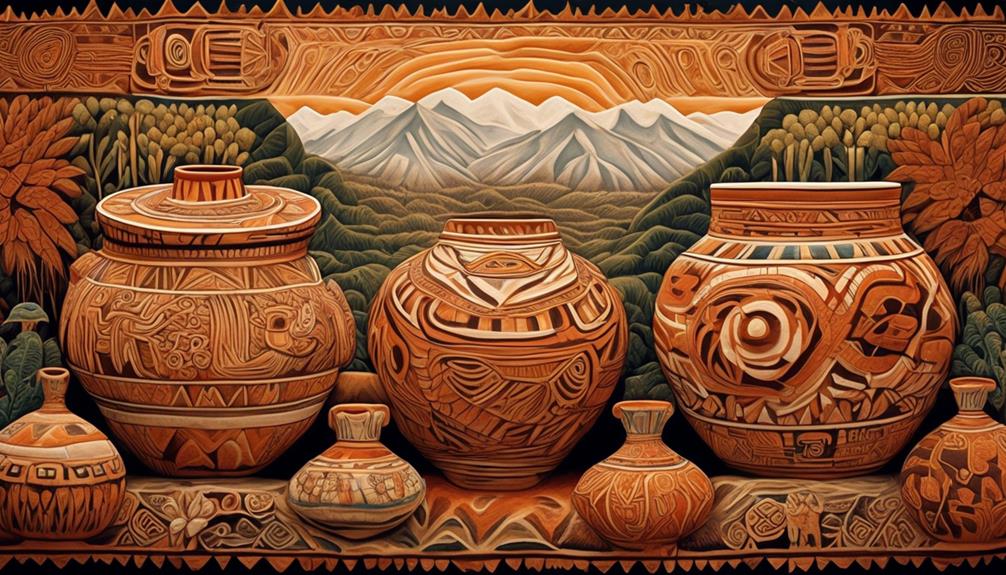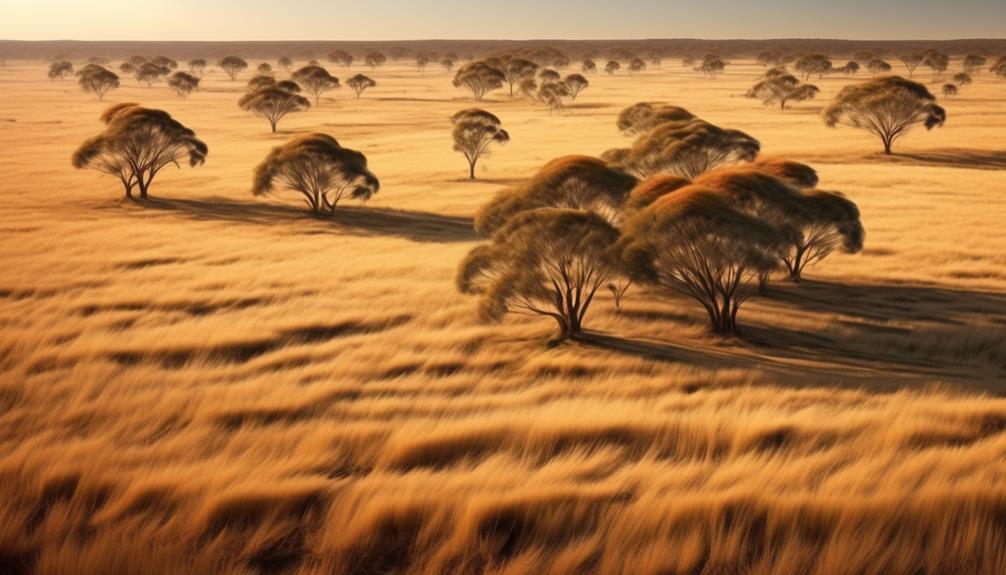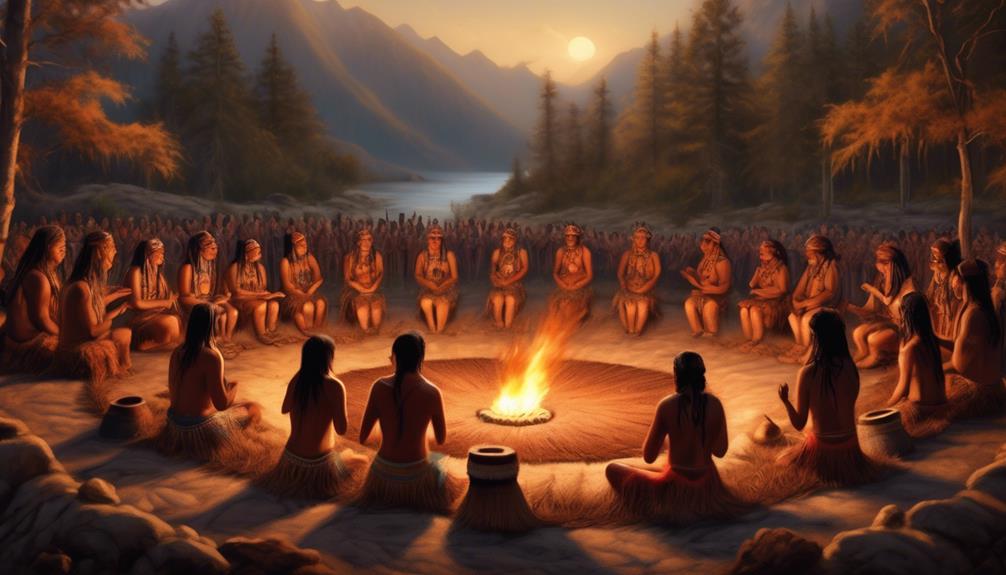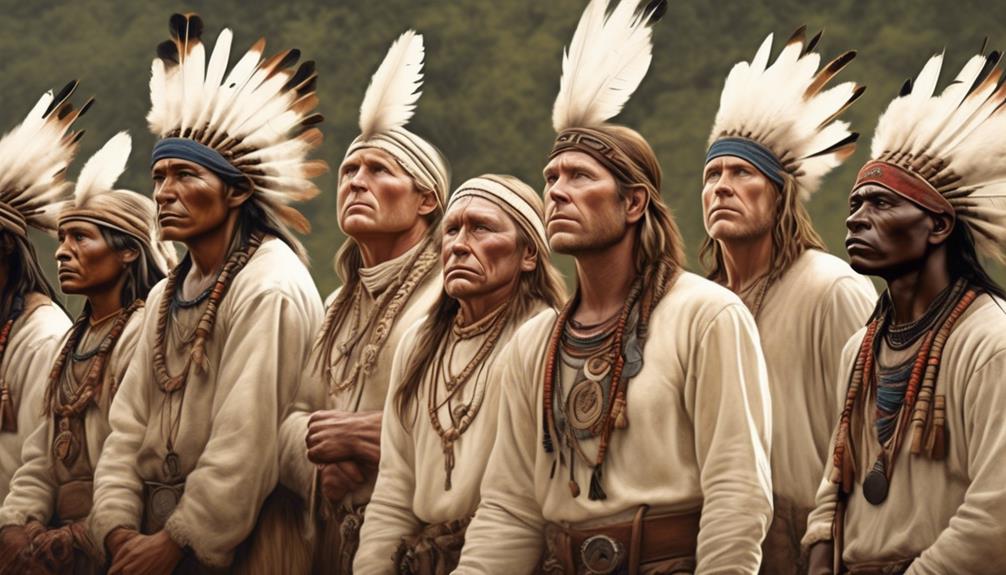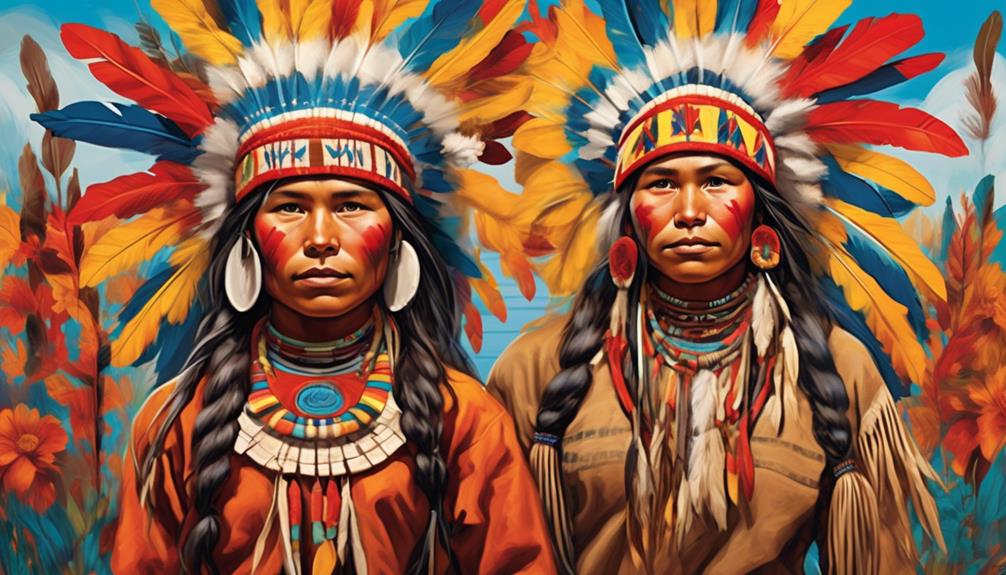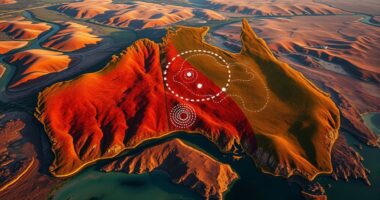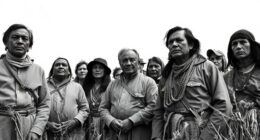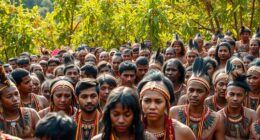We are here to explore the fascinating indigenous cultures that thrived in what is now modern-day Peru.
The Moche, Nazca, and Huari civilizations left behind a rich legacy, encompassing remarkable artistic achievements, engineering marvels, and enduring influences on the cultural landscape of Peru.
These ancient societies continue to captivate scholars and enthusiasts alike, offering invaluable insights into the complexities of pre-Columbian civilizations.
But what exactly sets these indigenous cultures apart and how did they shape the foundations of the region we know today?
Key Takeaways
- The Moche, Nazca, and Huari civilizations were all indigenous to the region.
- These civilizations had their own unique cultures, traditions, and contributions to art, architecture, and engineering.
- They had advanced agricultural practices and sustainable methods.
- These civilizations left behind impressive archaeological sites that provide valuable insights into their way of life.
Origins and Influence of the Moche Civilization
The Moche civilization, originating in the northern coast of Peru around 100 CE, exerted significant influence on the development of Andean cultures through their advanced artistic and architectural achievements. Their architectural prowess is evident in the construction of monumental structures such as the Huaca del Sol and the Huaca de la Luna, impressive pyramid-like temples that showcase their engineering capabilities. These architectural marvels not only served as ceremonial and religious centers but also demonstrated the Moche's understanding of complex construction techniques.
Moreover, the Moche were pioneers in agricultural techniques, utilizing sophisticated irrigation systems to cultivate crops in the arid coastal desert. Their expertise in managing water resources and constructing efficient irrigation canals allowed them to sustain large agricultural surpluses, supporting a dense population. This agricultural prosperity enabled the development of their complex society, with specialized labor contributing to the construction of elaborate architectural wonders.
The Moche civilization's innovative architectural and agricultural practices laid the foundation for the flourishing of subsequent Andean cultures, leaving a lasting legacy that reverberates through the annals of history.
The Remarkable Geoglyphs of the Nazca Culture
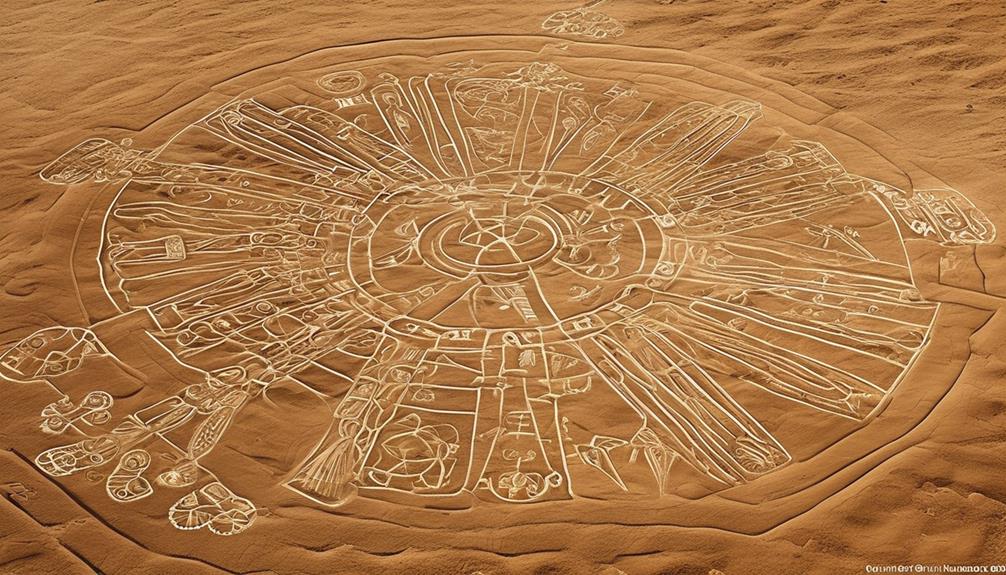
Excavating the desert floor, we uncovered the enigmatic and sprawling geoglyphs of the Nazca Culture, revealing their intricate and mysterious designs etched into the earth.
These mysterious lines, known as the Nazca Lines, are a series of large ancient geoglyphs located in the Nazca Desert in southern Peru. Created between 500 BCE and 500 CE, the purpose and cultural significance of these geoglyphs continue to intrigue and mystify researchers and archaeologists.
The geoglyphs depict various animals, plants, and shapes, some of which are several hundred feet long. Their cultural significance is thought to be tied to religious or ceremonial practices of the Nazca people, possibly serving as pathways for ceremonial processions or as offerings to deities.
The precision and scale of these geoglyphs are a testament to the advanced engineering and artistic capabilities of the Nazca civilization.
Despite the passage of centuries, the Nazca Lines continue to captivate and inspire awe, inviting us to unravel the secrets of this ancient culture and their remarkable creations.
Engineering Marvels of the Huari Civilization
Uncovering the advanced infrastructure of the Huari Civilization revealed impressive feats of engineering and construction. The Huari people were known for their advanced urban planning, featuring well-designed streets, intricate irrigation systems, and massive architectural structures. One of their remarkable achievements was the construction of elevated platforms called 'ushnus,' which were used for ceremonial and administrative purposes. These ushnus were built with precise stone masonry and were strategically positioned to align with celestial events, showcasing the sophisticated astronomical knowledge of the Huari civilization.
Moreover, the Huari's technological innovations in agriculture allowed them to cultivate crops at high altitudes, contributing to their economic prosperity and population growth. They engineered terraces and irrigation channels that optimized water distribution and soil fertility, enabling them to sustain large agricultural outputs in the challenging Andean environment.
The Huari's mastery of advanced infrastructure and technological prowess not only facilitated their societal organization but also left a lasting legacy of impressive engineering marvels that continue to intrigue and inspire modern-day scholars and enthusiasts.
Artistic Achievements of the Moche, Nazca, and Huari
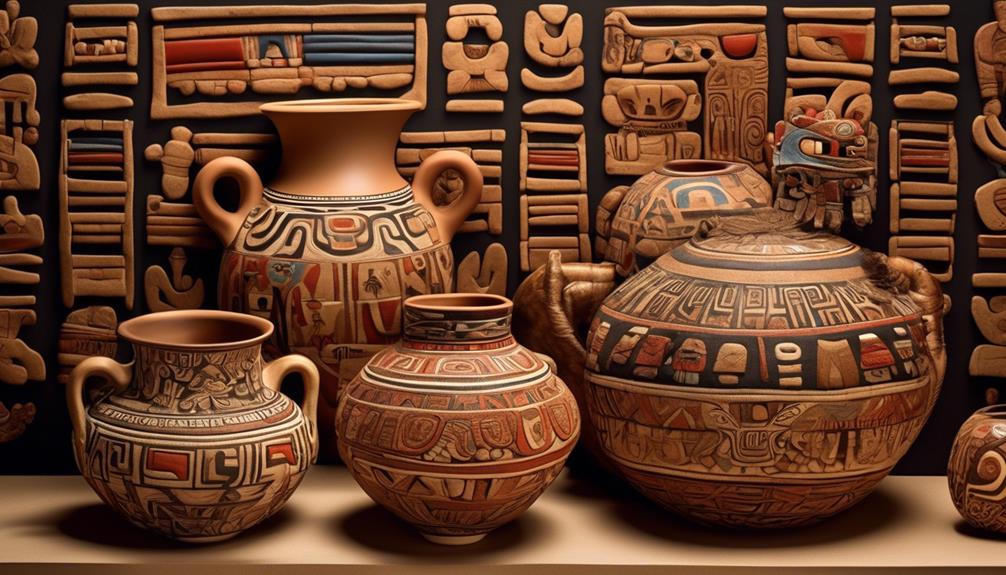
Delving into the artistic achievements of the Moche, Nazca, and Huari civilizations reveals a rich tapestry of creative expression and cultural significance. These indigenous societies demonstrated remarkable craftsmanship and artistic prowess, leaving behind a legacy that continues to captivate modern archaeologists and art enthusiasts.
| Artistic Achievements | Description |
|---|---|
| Innovative Pottery | The Moche civilization is renowned for its innovative pottery, characterized by lifelike representations of everyday life, ritualistic scenes, and mythical creatures. The vessels were not only utilitarian but also served as a canvas for storytelling and cultural expression. |
| Intricate Textiles | Nazca society excelled in the creation of intricate textiles, utilizing complex weaving techniques and vibrant dyes. These textiles often featured intricate geometric patterns and depictions of deities and animals, showcasing the Nazca's exceptional skill and cultural symbolism. |
| Cultural Symbolism | Both the Moche and Nazca civilizations embedded profound cultural symbolism into their artistic creations, providing valuable insights into their belief systems, societal structure, and religious practices. The intricate designs and motifs carried deep meaning and significance, enriching our understanding of these ancient cultures. |
| Archaeological Discoveries | The archaeological discoveries of these artistic masterpieces offer a window into the daily lives, traditions, and values of the Moche, Nazca, and Huari civilizations. The meticulous excavation and preservation of these artifacts enable us to appreciate the immense talent and creativity of these indigenous peoples. |
The innovative pottery, intricate textiles, and cultural symbolism of the Moche, Nazca, and Huari civilizations not only reflect their artistic achievements but also serve as invaluable historical and cultural resources.
Legacy and Impact on Modern-Day Peru
The artistic achievements of the Moche, Nazca, and Huari civilizations continue to resonate in modern-day Peru, shaping the cultural landscape and leaving a lasting legacy that permeates various aspects of contemporary society. The legacy and impact of these indigenous civilizations on modern-day Peru are profound and multifaceted.
- Cultural Preservation: The rich cultural heritage of the Moche, Nazca, and Huari civilizations has contributed to the preservation of indigenous traditions in modern-day Peru, fostering a deep sense of pride and identity among the Peruvian people.
- Tourism Opportunities: The archaeological sites and artifacts left behind by these civilizations have become key attractions for tourists, driving economic development and providing opportunities for the local communities.
- Artistic Influence: The artistic techniques and motifs of these ancient civilizations continue to inspire contemporary Peruvian artists, influencing various forms of modern art and design.
- Historical Awareness: The study and appreciation of these indigenous civilizations have enhanced historical awareness and understanding among the Peruvian population, fostering a sense of connection to the past.
- Cultural Fusion: The enduring legacy of the Moche, Nazca, and Huari civilizations has contributed to a rich tapestry of cultural fusion in modern-day Peru, where indigenous traditions coexist alongside modern influences.
Frequently Asked Questions
What Were the Main Trade Routes and Economic Systems of These Civilizations?
Trade routes in these civilizations were vital for cultural exchange and resource distribution. Economic systems were based on agricultural production, textile manufacturing, and metalwork.
The main trade routes connected coastal and inland regions, facilitating the exchange of goods such as textiles, ceramics, and foodstuffs. These trade networks played a crucial role in the economic prosperity of these indigenous civilizations, allowing for the exchange of goods and ideas across different regions.
What Were the Religious Beliefs and Practices of the Moche, Nazca, and Huari Civilizations?
Religious beliefs and practices were central to the Moche and Nazca civilizations. The Moche believed in powerful deities and performed elaborate ceremonies to honor them.
Similarly, the Nazca practiced ritualistic worship and created intricate geoglyphs as offerings.
Both civilizations influenced each other, showcasing the interconnectedness of ancient societies.
Their religious influence extended beyond their borders, impacting neighboring cultures and trade routes.
As the saying goes, 'Where there's unity, there's always victory.'
How Did the Moche, Nazca, and Huari Civilizations Interact and Influence Each Other?
Cultural exchange between the Moche, Nazca, and Huari civilizations was extensive and led to significant artistic influence. This interaction facilitated the spread of innovative techniques and styles, fostering a vibrant cultural landscape.
The Moche, Nazca, and Huari people were interconnected through trade, communication, and shared rituals, which contributed to the development of a rich and diverse artistic tradition. The resulting fusion of ideas and practices continues to captivate scholars and enthusiasts alike.
What Were the Social Structures and Hierarchies Within These Civilizations?
When it comes to social hierarchies, power structures, and religious ceremonies within these civilizations, it's essential to delve deep into the intricate web of societal dynamics. Understanding the intricate interplay of these factors is crucial for grasping the complexities of these ancient cultures.
Similarly, exploring the economic systems, trade routes, and agricultural practices of these civilizations will provide valuable insights into their way of life. These aspects are closely intertwined with their social organization and contribute to the overall functioning of their societies.
By examining these different facets, we can begin to unravel the multifaceted nature of their social organization. This exploration will shed light on the intricate tapestry of their daily lives, revealing the intricate connections and influences that shaped their civilizations.
What Were the Major Agricultural Practices and Technologies Used by These Ancient Civilizations?
Ancient farming techniques and irrigation systems were crucial for the agricultural technology of these civilizations. They developed sophisticated methods for water management, like canals and terracing, to support their crops.
Trading routes played a pivotal role in their economic systems, allowing them to exchange goods and agricultural products.
These advancements in agriculture were fundamental to the prosperity and sustainability of the Moche, Nazca, and Huari civilizations.
Conclusion
In conclusion, the Moche, Nazca, and Huari were all indigenous civilizations in what's now Peru. They left behind remarkable geoglyphs, engineering marvels, and artistic achievements that continue to inspire and awe modern-day Peru.
Their legacy lives on in the rich cultural heritage of the region, serving as a testament to the ingenuity and creativity of these ancient civilizations.
